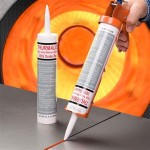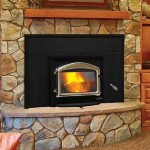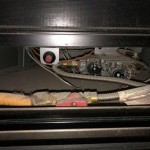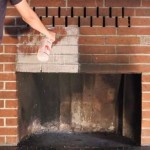Zero Clearance Gas Fireplace Insert Installation: A Comprehensive Guide
A zero clearance gas fireplace insert offers a convenient and efficient method for upgrading an existing masonry fireplace or incorporating a fireplace into a new construction project without the need for extensive structural modifications. The term "zero clearance" refers to the unit's ability to be safely installed directly against combustible materials, such as wood framing, without requiring a non-combustible hearth extension. This installation flexibility expands design possibilities while simplifying the overall construction process. This article details the key considerations, procedures, and safety precautions involved in the proper installation of a zero clearance gas fireplace insert.
Before initiating any installation work, it's crucial to thoroughly familiarize oneself with the manufacturer's installation manual. This document provides specific instructions tailored to the particular model, including clearance requirements, venting specifications, gas line connections, and wiring diagrams. Adhering strictly to these instructions is paramount for ensuring safe and code-compliant operation of the fireplace insert. Failure to comply with the manufacturer's guidelines can void warranties and potentially create hazardous conditions.
Pre-Installation Assessment and Planning
The first step in installing a zero clearance gas fireplace insert involves a comprehensive assessment of the installation site. This includes verifying that the structural framing can support the weight of the unit, confirming adequate gas supply capacity, and determining the appropriate venting configuration. Measurement of the existing fireplace opening or the planned construction area is crucial to ensure that the chosen insert model will fit properly. Furthermore, local building codes and regulations must be consulted to ensure compliance with all applicable requirements.
The gas supply line must be of sufficient size to provide the required gas pressure to the fireplace insert. Local gas codes specify the minimum pipe diameter based on the BTU input rating of the unit and the distance from the gas meter. A licensed gas fitter should perform the gas line connection to ensure safe and leak-free operation. They will also perform a pressure test on the gas line after the connection is made. It is imperative to shut off the gas supply at the main valve before initiating any gas line work.
Venting requirements for zero clearance gas fireplace inserts vary depending on the model and the type of gas used (natural gas or propane). Some inserts require a direct vent system, which draws combustion air from outside the house and expels exhaust gases through separate concentric pipes. Other models may utilize a B-vent system, which relies on natural draft for venting. The venting system must be installed according to the manufacturer's specifications and local codes. Horizontal vent runs must maintain proper slope to prevent condensation buildup and ensure adequate draft. Terminations must be located away from windows, doors, and air intakes to prevent the entry of exhaust gases into the building.
Electrical wiring is typically required for the fireplace insert to power features such as the ignition system, blower fan, and remote control. A dedicated electrical circuit should be installed by a qualified electrician, and all wiring must comply with local electrical codes. The electrical connection should be made according to the manufacturer's wiring diagram. It is extremely important to disconnect power at the breaker before performing any electrical work.
Installation Procedure
With the pre-installation assessment complete and all necessary preparations made, the actual installation of the zero clearance gas fireplace insert can begin. This process typically involves the following steps:
1.
Framing and Preparation:
If the insert is being installed in a new construction project or replacing an existing fireplace, the framing must be constructed according to the manufacturer's specifications. This may involve building a fire-rated enclosure that provides adequate clearance around the unit. The framing should be plumb, level, and securely fastened to the surrounding structure.2.
Venting Installation:
Installing the venting system is a critical step in the installation process. The vent pipes must be properly connected and sealed to prevent leaks and ensure proper draft. The venting system should be supported according to the manufacturer's instructions. Care must be taken to avoid obstructions and maintain proper clearances from combustible materials.3.
Gas Line Connection:
A licensed gas fitter should connect the gas line to the fireplace insert, ensuring that all connections are tight and leak-free. A gas shut-off valve should be installed upstream of the unit for easy access in case of emergency. After the connection is made, the gas line should be pressure-tested to verify that there are no leaks. This test typically involves applying a small amount of pressure to the line and monitoring for any pressure drop.4.
Wiring and Electrical Connection:
A qualified electrician should connect the electrical wiring to the fireplace insert, following the manufacturer's wiring diagram. All connections should be secure and properly insulated. A ground wire must be installed to protect against electrical shock. The electrical circuit should be tested to ensure that it is functioning properly. It is crucial to verify the voltage and amperage requirements of the unit before connecting it to the electrical supply.5.
Insert Placement and Securing:
Once the venting, gas, and electrical connections are complete, the fireplace insert can be carefully placed into the framed opening. The unit should be level and plumb and securely fastened to the framing according to the manufacturer's instructions. Gaps between the insert and the framing should be sealed with a fire-resistant caulk to prevent air infiltration. Proper support is vital to ensure the long-term stability and safety of the installed insert.6.
Finishing and Trim Installation:
After the insert is installed and secured, the finishing and trim can be installed around the unit. This may involve installing a decorative surround, mantel, or hearth. The finishing materials must be non-combustible or installed with appropriate clearances from the fireplace insert. The manufacturer's instructions provide specific guidelines for finishing and trim installation.7.
Testing and Startup:
Before operating the fireplace insert, it is essential to perform a thorough testing and startup procedure. This involves checking all connections for leaks, verifying that the venting system is functioning properly, and testing the ignition system and blower fan. The manufacturer's instructions provide detailed guidance on the testing and startup procedure. All safety features, such as the flame sensor and overheat protection, should be verified to ensure they are working as intended.Key Safety Considerations
Safety is paramount when installing and operating a zero clearance gas fireplace insert. The potential hazards associated with gas appliances include gas leaks, carbon monoxide poisoning, and fires. Adhering to the following safety precautions can significantly reduce the risk of accidents:
1.
Professional Installation:
Hiring qualified and licensed professionals for the installation of the gas line, venting system, and electrical wiring is strongly recommended. These professionals have the knowledge, experience, and tools necessary to perform the installation safely and correctly. They are also familiar with local building codes and regulations that must be followed.2.
Carbon Monoxide Detection:
Installing a carbon monoxide detector near the fireplace insert is crucial for detecting any leaks of this odorless and deadly gas. The detector should be tested regularly and replaced according to the manufacturer's instructions. Carbon monoxide detectors provide an early warning of potential hazards and can save lives.3.
Regular Maintenance:
Regular maintenance of the fireplace insert is essential for ensuring safe and efficient operation. This includes cleaning the burner, inspecting the venting system, and checking for gas leaks. The manufacturer's instructions provide a detailed maintenance schedule. A yearly inspection by a qualified technician is also recommended.4.
Proper Ventilation:
Ensure adequate ventilation in the room where the fireplace insert is installed. This helps to prevent the buildup of carbon monoxide and other harmful gases. Avoid blocking air vents or sealing off the room completely. Proper ventilation is essential for maintaining a safe and healthy indoor environment.5.
Clearances to Combustibles:
Maintaining proper clearances to combustible materials is crucial for preventing fires. The manufacturer's instructions specify the minimum clearances required for the particular model. Avoid placing furniture, curtains, or other combustible materials too close to the fireplace insert. Clearances help prevent excessive heat transfer causing ignition of any combustible material.Troubleshooting Common Issues
Even with proper installation, certain issues may arise during the operation of a zero clearance gas fireplace insert. Familiarizing oneself with common troubleshooting techniques can help resolve these issues quickly and efficiently:
1.
Pilot Light Problems:
If the pilot light will not light or stay lit, check the gas supply, thermocouple, and pilot assembly. A dirty or faulty thermocouple can prevent the pilot light from staying lit. Clean the pilot assembly and replace the thermocouple if necessary.2.
Ignition Problems:
If the main burner will not ignite, check the ignition system, gas valve, and flame sensor. The ignition system may need to be cleaned or replaced. A faulty gas valve or flame sensor can also prevent the burner from igniting.3.
Venting Problems:
If the venting system is not functioning properly, check for obstructions, leaks, and backdrafting. Obstructions can restrict airflow and prevent proper venting. Leaks can allow exhaust gases to escape into the building. Backdrafting can cause exhaust gases to flow back into the room.4.
Blower Fan Problems:
If the blower fan is not working, check the power supply, wiring connections, and fan motor. A faulty power supply or wiring connection can prevent the fan from operating. The fan motor may need to be cleaned or replaced.5.
Gas Leak Detection:
If a gas leak is suspected, immediately shut off the gas supply at the main valve and evacuate the building. Do not use any electrical devices or open flames. Contact the gas company or a qualified gas fitter to inspect and repair the leak. Gas leaks can be extremely dangerous and should be addressed immediately.By adhering to the manufacturer's instructions, following safety precautions, and performing regular maintenance, homeowners can enjoy the warmth and ambiance of a zero clearance gas fireplace insert while ensuring safe and efficient operation. The installation process should be approached with careful planning and attention to detail, paying close attention to local regulations and the specific requirements of the chosen insert model. The result is a valuable addition to a home, providing comfortable supplemental heat and enhanced aesthetic appeal.

Zero Clearance Fireplaces Gas Wood

Fireplace Insert Vs Zero Clearance Maple Mtn

Is A New Zero Clearance Fireplace Right For You Design Styles Sizes

Zero Clearance Vs Prefabricated Fireplace Full Service Chimney
.aspx?strip=all)
Zero Clearance Fireplaces Explained Regency Fireplace S

Fireplace Insert Installation Wood Inserts Gas Pellet And Electric

Enviro G42 Gas Zero Clearance Fireplace Fergus

Best Fireplace Insert Repair Installs Ton Service

Zero Clearance Wood Gas Fireplaces Richmond Va Prefab

Fireplace Install In Winchester Tn Huntsville Al Zero Clearance
Related Posts








